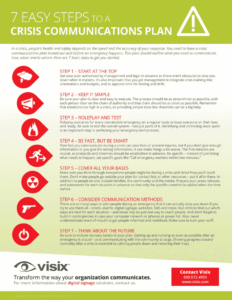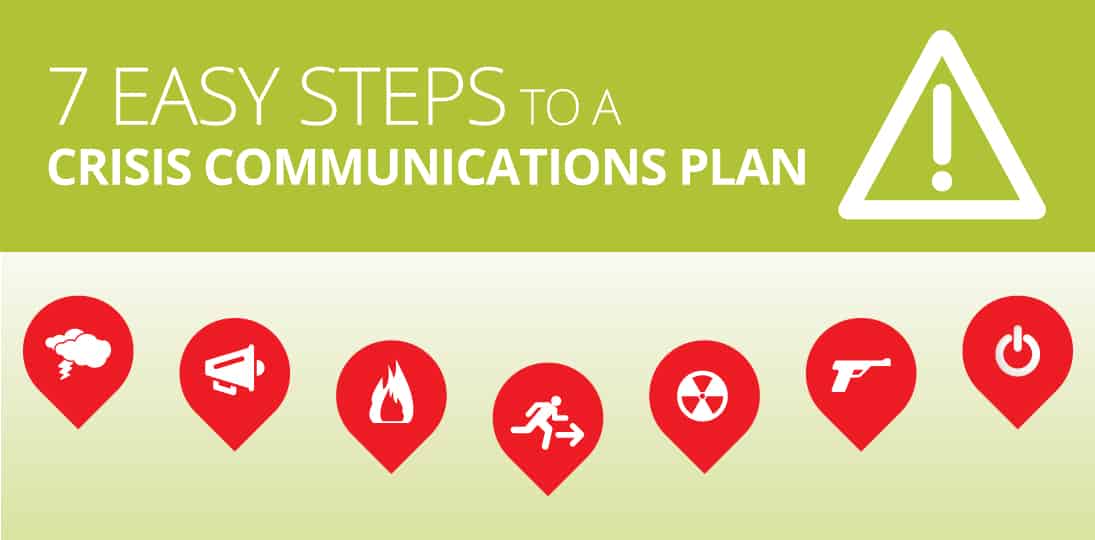Emergencies today come in many forms – severe weather, fire and hazmat alerts, even threats of violence. It’s important to build a comprehensive crisis communications plan that is fast to execute, thorough in reach and always at the ready. Some of the top considerations are:
- Executive involvement
- Streamlining processes
- Testing and preparedness
- Speed of communications
- Thoroughness and specificity
- Technology and targets
- Recovery plan
One of the most important steps is to pull together a team that represents all of the stakeholders. Think about everyone who might be involved from a security and communications standpoint, but also everyone who needs to receive your communications. Different audiences will need to get alerts in different ways, so you’ll need to cover all the bases.
When it comes to communication channels, the list is growing every day. This is especially true with all of the social media networks coming online. You’ll need to consider whether you want to push out alerts across every medium, or use a single channel. If you choose the latter, you’ll have to ensure that everyone has access to it and that it will alert them immediately when needed. (You can’t wait for people to go to a webpage when timing is critical.)
Need some help with crisis communications technology? We can help. In the meantime, our infographic will walk you through seven easy steps to build your crisis communications plan:

Need more details on crisis planning and CAP alerts? Read our white paper here.
